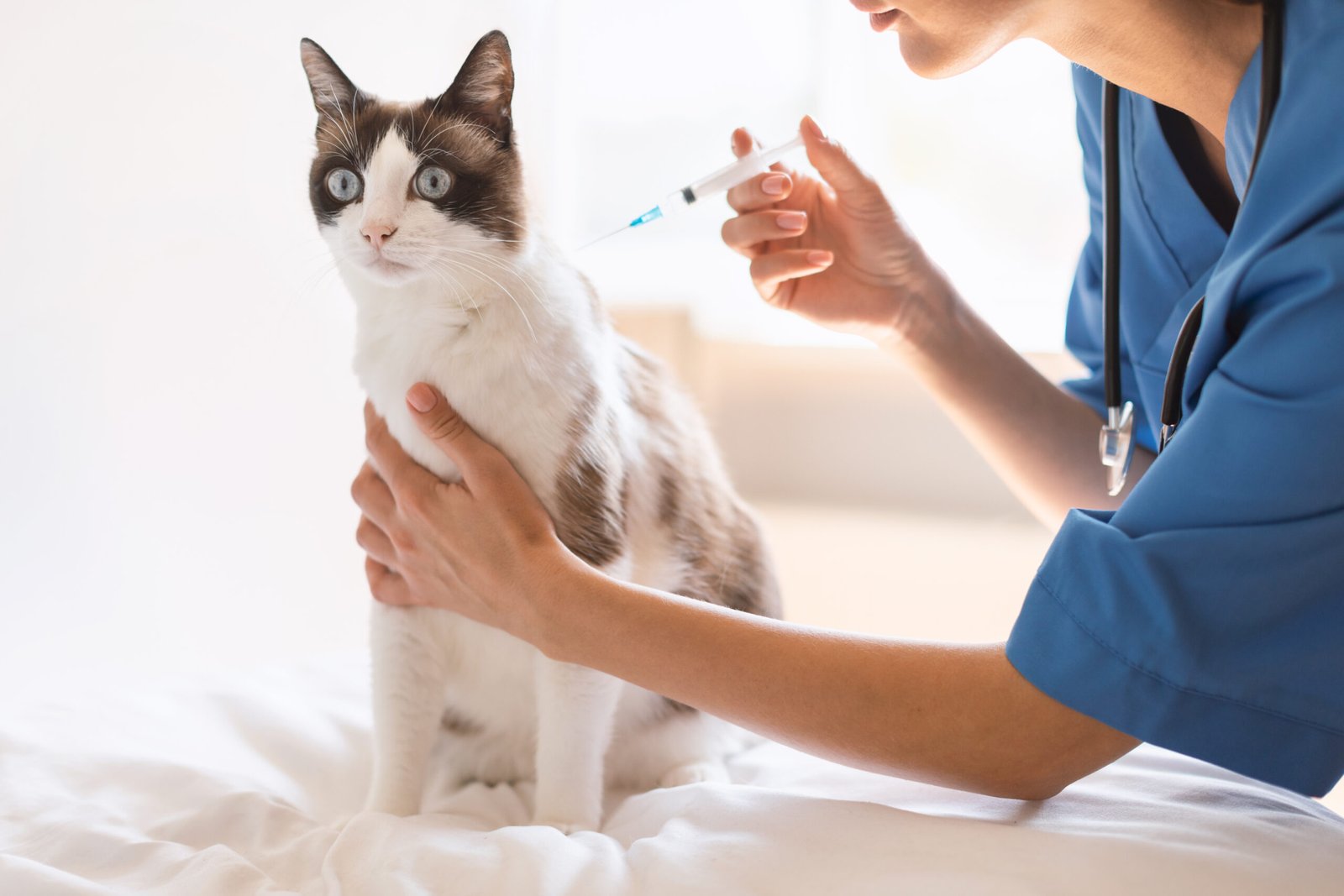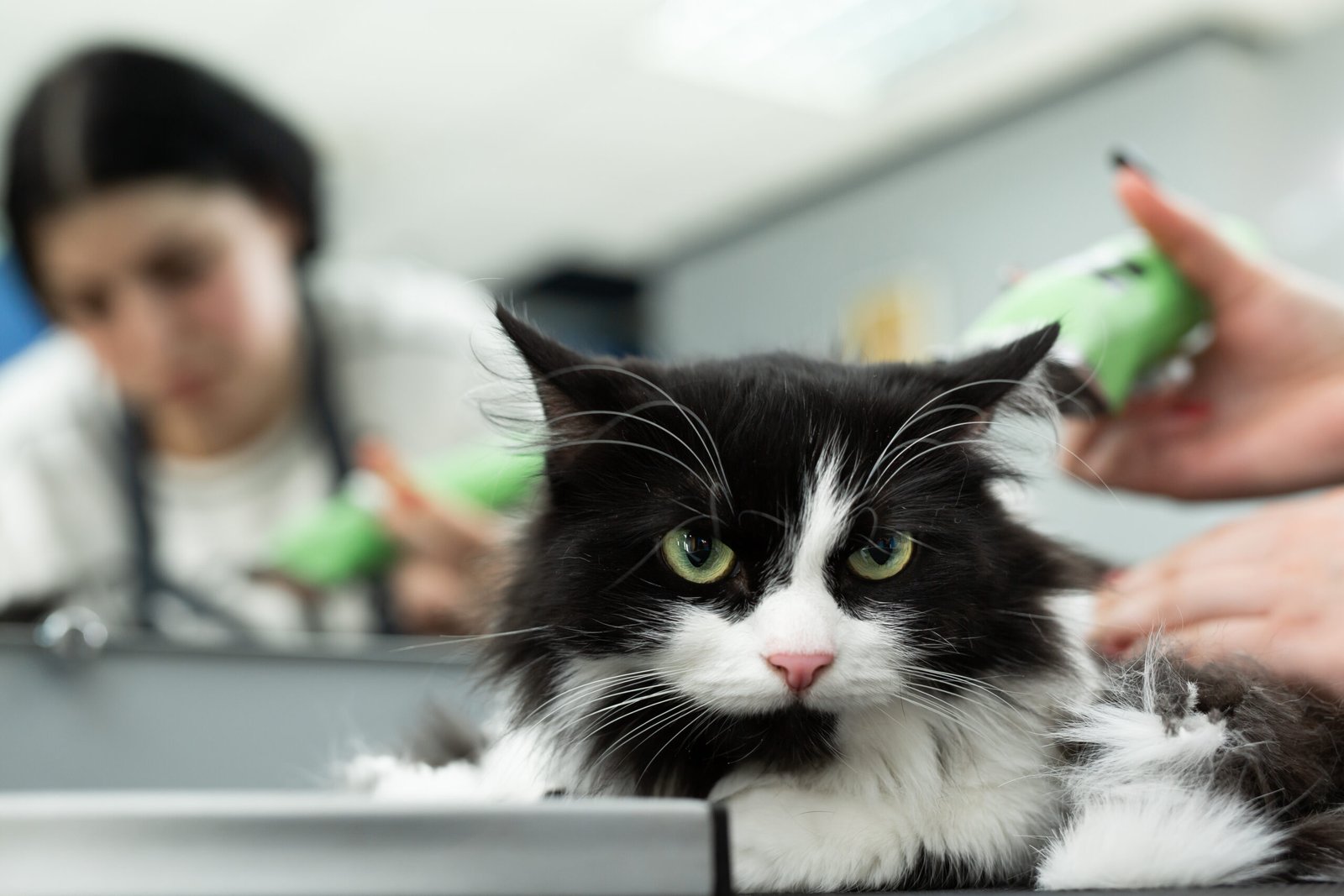When it comes to ensuring the well-being of our furry friends, few topics are as vital as their diet. Understanding how to choose the right food for your pet is a responsibility that can seem overwhelming given the plethora of choices on the market. This comprehensive guide aims to demystify the process, helping you navigate the world of pet nutrition so that you can make informed decisions for your beloved companion.
Choosing the right food for your dog or cat
Selecting the ideal food for your pet involves more than just picking out what looks tasty or is highly advertised. Consideration of your pet’s age, size, and activity level is fundamental in determining their nutritional needs. Different life stages like puppyhood, adulthood, and senior years require varied nutrient compositions that support growth, maintenance, and overall well-being.
When crafting a diet plan, it’s crucial to opt for high-quality ingredients free from artificial additives or fillers. Such choices are more likely to provide the essential vitamins, minerals, and proteins that pets need to thrive. Moreover, consulting your veterinarian can provide tailored advice based on any specific health conditions or dietary requirements your pet might have. The right blend of wet and dry food may also play a pivotal role in addressing their preferences and dental health needs. Regularly monitoring your pet’s weight and overall health ensures that their diet continues to meet their evolving nutritional needs.
– Puppies and kittens need diets rich in protein and fat to support rapid growth and development.
– Active breeds may require higher calorie food to support their energy levels.
– Senior pets often benefit from diets that focus on joint health and lower caloric density.
The great debate: Wet food vs. dry food
Pet owners often find themselves caught in the wet vs. dry food debate, as both have their distinct benefits and concerns. Wet food, characterized by higher moisture content, is great for pets’ hydration and urinary health, making it a preferred choice among those managing such issues. Conversely, dry food offers convenience and cost-effectiveness, along with dental benefits due to its crunchy texture, thereby assisting in maintaining dental health by reducing plaque and tartar buildup.
While wet food can be more palatable for picky eaters and easier to chew for older pets or those with dental issues, dry food often boasts a longer shelf life and ease of storage. For some pet owners, practicality plays a significant role in decision-making. Deciding between wet and dry options ultimately depends on your pet’s specific dietary needs, preferences, and lifestyle. For instance, a blend that incorporates both types could achieve a balance of taste, convenience, and nutritional value.
– Wet food is beneficial for pets prone to dehydration.
– Dry food is often more economical and easier to store in bulk.
– Blending wet and dry food can address multiple dietary preferences and health needs.
Grain-free dog food
Grain-free diets have gained popularity among pet owners looking for alternatives to traditional kibble. These diets generally substitute grains with ingredients like potatoes, peas, or lentils, aiming to provide a source of carbohydrates without including common allergens. They may be beneficial for dogs exhibiting specific food sensitivities or allergies, especially those affecting digestion.
However, some concerns have been raised about potential links between grain-free diets and health issues such as heart disease. These links are prompting ongoing research into the long-term effects of such nutritional choices. Consulting with a veterinarian is crucial when considering grain-free options, ensuring that they align with your pet’s individual health needs while maintaining nutritional adequacy.
– Grain-free diets often cater to pets with specific grain allergies.
– Ingredients like peas or lentils provide carbohydrate alternatives.
– Continuous research is essential to evaluate the safety of grain-free diets for heart health.
Look for AAFCO statements on your pet’s food
When evaluating pet food options, looking for AAFCO statements on packaging can provide peace of mind regarding nutritional adequacy. The Association of American Feed Control Officials (AAFCO) establishes nutritional standards that manufacturers should follow, although they do not directly test or approve pet foods. Products with an AAFCO statement have been assessed to meet minimum nutritional guidelines through formulation or feeding trials.
Selecting pet foods with an AAFCO statement helps ensure your pet receives essential nutrients for optimal health. This compliance is a baseline indicator that the food aligns with industry standards, providing balance and quality. Consulting with a veterinarian about AAFCO-approved foods can further guide decisions on the best nutrition plan for your pet’s unique needs.
– Foods with AAFCO statements meet established nutritional guidelines.
– AAFCO does not approve but sets standards that manufacturers comply with.
– Veterinarians can offer insights on AAFCO compliance for tailored pet nutrition.
What about popular diets or special cases?
The rising popularity of certain pet diets, like raw, grain-free, and organic, brings both opportunities and pitfalls. Understanding the pros and cons of these diets is essential to ascertain what best suits your pet’s needs. Diets should account for specific health conditions or dietary restrictions, such as allergies or weight management issues. Consulting with a veterinarian ensures the suitability and nutritional adequacy of any specialized or trendy diets you’re considering for your pet.
One should also be wary of marketing claims, prioritizing evidence-based nutritional guidelines when selecting commercial pet food products. Regularly evaluating your pet’s health and well-being is necessary to ensure their diet continues to meet their evolving health and lifestyle needs.
– Raw diets aim to replicate the natural eating habits of wild animals.
– Organic foods often contain fewer pesticides but require assessment of nutritional value.
– Adjustments to diet should be medically evaluated for pets with allergies or health conditions.
Food allergies
Understanding common food allergies in pets, such as those to beef, chicken, dairy, and grains, is vital in preventing adverse reactions. Identifying signs like skin irritations, gastrointestinal upset, and frequent ear infections is essential for promptly addressing dietary needs. Accurate diagnosis through elimination diets or allergy testing under a veterinarian’s guidance can pinpoint allergens effectively.
Opting for hypoallergenic pet foods or limited-ingredient diets can minimize the risk of allergic reactions, ensuring your pet’s comfort and health. Consistently monitoring your pet’s response to their diet is crucial, allowing adjustments as necessary to optimize their health and happiness.
– Common allergens include beef, chicken, dairy, and particular grains.
– Signs like itchy skin or digestive issues may indicate allergies.
– Hypoallergenic diets tailor nutrient intake to minimize allergy risks.
Prescription diets
Prescription diets are specifically formulated to address particular health issues in pets, such as kidney disease, diabetes, or allergies. These specialized diets are typically recommended by veterinarians following a thorough assessment of a pet’s medical needs. They contain carefully controlled levels of nutrients designed to support the pet’s health condition while providing balanced nutrition.
Although prescription diets may incur higher costs, their role in managing, and potentially improving, a pet’s overall well-being cannot be overstated. Following a vet’s guidance regarding prescription diets and monitoring the pet’s response is crucial to ensure their effectiveness in promoting health.
– Prescription diets target specific medical conditions with tailored formulations.
– Essential for managing conditions like kidney disease or allergies.
– Follow a veterinarian’s advice carefully for optimal health outcomes.
Raw diets
Raw diets consist of uncooked ingredients such as meat, bones, fruits, and vegetables, mimicking the natural diet of wild animals. Proponents argue that these diets enhance pets’ coat condition, energy levels, and overall health, reflecting their evolutionary eating habits. Raw food options can be homemade or commercially prepared, offering convenience and customization to pet owners.
Despite potential benefits, raw diets pose risks such as nutritional imbalances, bacterial contamination, and dental issues if bones are improperly managed. Consulting with a veterinarian ensures a raw diet meets your pet’s nutritional requirements and safety standards, making informed decisions critical to your pet’s health and safety.
– Raw diets reflect ancestral eating habits with unprocessed foods.
– Risks include potential nutritional imbalances and bacterial contamination.
– Veterinary consultation ensures dietary safety and nutritional adequacy.
What to consider when selecting pet food:
| Aspect | Details |
|---|---|
| Age and Life Stage | Different life stages (puppy, adult, senior) require specific nutritional compositions to support growth, maintenance, and overall health. |
| Size and Breed Considerations | Larger breeds may need diets with specific calorie counts and nutrients to support their joint health, while smaller breeds may require higher protein content. |
| Ingredient Quality | High-quality ingredients without artificial additives or fillers are crucial for providing essential nutrients. |
| Dietary Needs | Tailor diets based on specific health conditions (e.g., allergies, obesity) or dietary restrictions to ensure optimal health. |
| AAFCO Compliance | Look for AAFCO statements on pet food packaging to ensure nutritional adequacy; AAFCO sets standards but does not approve food directly. |
| Wet vs. Dry Food | Wet food aids hydration and is palatable, while dry food is cost-effective and supports dental health. A combination can provide balance. |
| Grain-Free Options | Grain-free diets cater to pets with allergies, but potential links to health issues (like heart disease) necessitate veterinary consultation. |
| Specialized Diets | Prescription diets for conditions like diabetes or kidney disease are essential and should be recommended by a veterinarian. |
| Monitoring and Adjusting | Regularly assess your pet’s weight, health, and reactions to food to adjust their diet as needed to align with their evolving nutritional requirements. |
| Avoiding Common Allergens | Common allergens like beef, chicken, dairy, and certain grains should be identified and avoided if your pet shows symptoms of allergies. |
| Importance of Professional Guidance | Always consult with a veterinarian for personalized advice, especially regarding new diets or if your pet shows signs of dietary distress. |
Selecting the right pet food involves careful consideration of several key factors. Assessing your pet’s nutritional needs, influenced by their age, breed, size, and any health conditions, is the foundation of choosing a balanced diet. Ingredients should be scrutinized for quality sources of protein, healthy fats, and essential vitamins while avoiding artificial additives and fillers.
Researching the manufacturer’s reputation for safety and quality, reviewing recalls, and evaluating consumer feedback is also vital. Moreover, cost-effectiveness and availability can impact your decision to ensure continuous access to the chosen food. Veterinarian recommendations provide a valuable resource for tailored guidance based on your pet’s unique health needs.
– Nutritional needs and life stage requirements drive dietary decisions.
– High-quality ingredients ensure optimal health without harmful additives.
– Brand reputation and affordability affect long-term feeding strategies.
Dry matter basis
Understanding the dry matter basis of pet food allows for a more accurate nutritional comparison by removing moisture content. This analysis provides pet owners a valuable insight into protein, fat, and fiber levels, ensuring the food meets their pet’s nutritional needs consistently. By comparing foods on a dry matter basis, you can choose high-quality pet food that supports overall health and longevity.
Utilizing dry matter basis comparison aids in making informed dietary choices, contributing to your pet’s happiness. Ensuring foods are nutritionally complete and adequate is essential for maintaining your companion’s health and promoting their well-being for years to come.
– Dry matter basis eliminates moisture for objective nutritional comparison.
– Helps assess the true value of protein, fat, and fiber content.
– Promotes informed, health-focused decisions for pet diets.
How to Choose the Best Dog Food
Choosing the best dog food is essential for meeting your furry friend’s dietary needs. Considerations of your dog’s age, size, and breed are crucial in ensuring their diet supports their health and well-being. Ingredients should be meticulously evaluated, favoring those that offer quality protein sources, whole grains, and essential nutrients.
Consulting with your veterinarian can address any specific health concerns or dietary requirements, providing the foundation for selecting a reputable brand with high safety standards and positive consumer reviews. Regular monitoring of your dog’s reaction to the food and making necessary adjustments promotes their overall health and happiness.
– Puppies require nutrient-rich diets for growth, while seniors might need diets focusing on joint health.
– Quality protein sources and balanced nutrients are fundamental.
– Veterinarian consultations can offer targeted nutrition advice.
Dog Food Myths and Misinformation
Pet owners often encounter dog food myths that may mislead them when choosing the right nutrition. It’s essential to discern facts from fiction to provide your pet with optimal health. Be wary of claims that certain ingredients are universally harmful, as they may lack scientific evidence. For instance, the grain-free craze lacks substantial research to support its superiority for all dogs and might even omit important nutrients.
Labels like “natural” and “holistic” can be misleading, emphasizing the need to check ingredient lists and nutritional content. Consulting with a veterinarian ensures your pet’s diet genuinely meets their specific health needs and dietary requirements, shielding against misinformation.
– Science doesn’t universally support the exclusion of all grains from diets.
– “Natural” labels often lack uniform standardization.
– Professional advice helps mitigate misinformation risks.
What factors should I consider when choosing the right food for my pet?
When deciding on the right food for your pet, several factors require consideration. Evaluating your pet’s age, size, and breed is crucial for deducing specific nutritional needs. Identifying any health conditions or allergies that necessitate dietary adjustments ensures their comfort and health. Researching high-quality ingredients and avoiding fillers and artificial additives protects against adverse health effects.
Consultation with veterinarians yields recommendations tailored to your pet’s unique requirements, ensuring their diet aligns with their health and lifestyle. Monitoring your pet’s response to their food and adjusting as needed guides continued optimal health and well-being.
– Tailor diets to life stages: puppies, adult dogs, seniors.
– Identify specific health conditions or allergies requiring special attention.
– Seek veterinarian guidance for personalized dietary recommendations.
How do I know if my pet has specific dietary needs?
Determining if your pet has specific dietary needs involves monitoring signs like digestive issues, weight changes, or fluctuations in energy levels. Consulting a veterinarian for a professional assessment of your pet’s health and dietary needs is an invaluable step. Consideration of their age, breed, and activity level further informs dietary choices.
Furthermore, known medical conditions or allergies warrant specialized nutrition plans, addressing distinct health challenges. Observing your pet’s response to their current diet and making informed adjustments ensures their well-being remains uninterrupted and thriving.
– Digestive disturbances can signal dietary inadequacies.
– Veterinary assessments provide clarity on special dietary needs.
– Tailored nutrition supports conditions like obesity or joint health concerns.
Are there any common ingredients I should avoid in pet food?
Certain ingredients in pet food may pose health risks, necessitating careful avoidance. Artificial preservatives, flavors, and colors can lead to adverse health effects over time. By-products and fillers, like corn gluten meal and animal digest, are often devoid of substantial nutritional value and can be challenging for pets to digest comfortably.
Particular grains, such as wheat and soy, may trigger allergies or sensitivities in some pets, leading to health issues. Meat labeled as “meat” or “meat meal” can be of inferior quality and may contain undesirable parts of animals. Additionally, low-quality fats, including lard or tallow, can contribute to obesity and other health problems in pets.
– Artificial additives often correlate with food sensitivities.
– Low-quality meat labels can obscure ingredient origins.
– Selecting food with clear ingredient lists supports health-conscious choices.
How can I determine the appropriate portion size for my pet’s meals?
– Consult with a Veterinarian: Schedule a visit with a veterinarian to get personalized recommendations based on your pet’s age, breed, weight, and health status. They can provide tailored advice to ensure your pet’s nutritional needs are met.
– Follow the Pet Food Brand’s Guidelines: Most pet food brands provide feeding guides on their packaging based on your pet’s weight. Use these as a starting point, but adjust if necessary based on your pet’s body condition and activity level.
– Use a Pet Food Calorie Calculator: Online calculators can help determine the precise caloric needs of your pet based on their size and activity level, assisting you in portioning meals accurately.
– Monitor Your Pet’s Weight: Regularly weigh your pet and visually inspect their body condition. Adjust their food portions if you notice weight gain or loss to keep them at a healthy weight.
– Consider Your Pet’s Activity Level: Adjust the portion sizes according to how active your pet is. A more active pet may require larger portions to maintain energy levels compared to a less active one.
– Implement Portion Control Tools: Use measuring cups or scales to ensure consistency in feeding. This helps prevent overfeeding by providing exact portions according to your feeding plan.
– Track Changes in Behavior or Health: If you observe changes such as lethargy or gastrointestinal issues, consider revisiting the portion size. These could be indicators of either overfeeding or underfeeding.
– Establish a Regular Feeding Schedule: Split the daily feeding quantity into regular meals throughout the day. This prevents overeating and aids digestion, helping to maintain appropriate portion sizes.
What are the benefits of choosing high-quality pet food over cheaper alternatives?
Navigating the pet food aisle can sometimes feel overwhelming given the myriad options available. It might be tempting to pick up a bag of the more economical, budget-friendly pet food, but investing in high-quality pet nutrition offers a range of significant advantages which can profoundly impact your pet’s health and well-being.
Enhanced Nutritional Content
High-quality pet foods are formulated with a keen understanding of the nutritional needs specific to different animals, breeds, and life stages. These premium products often contain a well-balanced ratio of proteins, carbohydrates, fats, vitamins, and minerals, crafted to support optimal health. For example, they might include higher-quality protein sources like chicken, beef, or fish, which are essential for maintaining muscle health and providing energy.
Healthier Skin and Coat
One of the most noticeable benefits of feeding your pet high-quality food is the transformation in their skin and coat health. Premium foods typically include Omega-3 and Omega-6 fatty acids, which play a vital role in promoting a shiny, healthy coat and minimizing skin irritation. Pets fed on these diets often exhibit reduced shedding and fewer allergic reactions.
Improved Digestive Health
Cheaper alternatives may utilize fillers like corn, wheat, or soy, which can be difficult for some pets to digest. On the other hand, high-quality pet food usually includes superior sources of fiber and probiotics that aid in digestion and help maintain a healthy gut flora. This can lead to more consistent and firmer stools, and a reduced likelihood of gastrointestinal issues such as bloating and diarrhea.
Boosted Immune System
High-grade pet foods are enriched with antioxidants and essential vitamins, such as Vitamin E and Vitamin C, which support a robust immune system. A strong immune system helps your pet efficiently combat infections and diseases, ultimately extending their lifespan and ensuring they lead a vigorous and happy life.
Weight Management
Obesity in pets is a growing concern, with serious implications for their long-term health. Quality pet foods tend to have better-calibrated calorie contents and emphasize lean proteins and healthy fats. This can help in maintaining a healthy weight, which reduces the risk of obesity-related disorders like diabetes, arthritis, and heart disease.
More Predictable Energy Levels
With balanced and higher-quality nutrient profiles, premium pet foods often do a better job of providing steady energy throughout the day. This translates to pets that are more active and engaged, participating more enthusiastically in play and exercise while avoiding the highs and lows that can result from less balanced nutrition.
Dental Health Support
Certain high-quality pet foods offer specific formulas designed to support dental health. These might include kibble with a crunchy texture to help reduce plaque, or ingredients like tartar control agents, contributing to healthier teeth and gums, and reducing bad breath.
In conclusion, choosing the right food for your pet is a critical decision that impacts their overall health and well-being. By considering factors such as your pet’s age, breed, activity level, and any specific health needs, you can select a diet that optimizes their vitality and longevity. Consulting with a veterinarian will provide you with tailored advice, ensuring that you’re making informed choices for your pet’s diet. Additionally, paying attention to ingredient quality and nutrition labels will help you navigate the myriad of options available in today’s market. Remember, a well-fed pet is a happy and healthy companion, so take the time to invest in their dietary needs for a fulfilling life together. Continue researching and staying informed as new products and nutritional discoveries emerge to ensure you’re always providing the best for your beloved animal.








